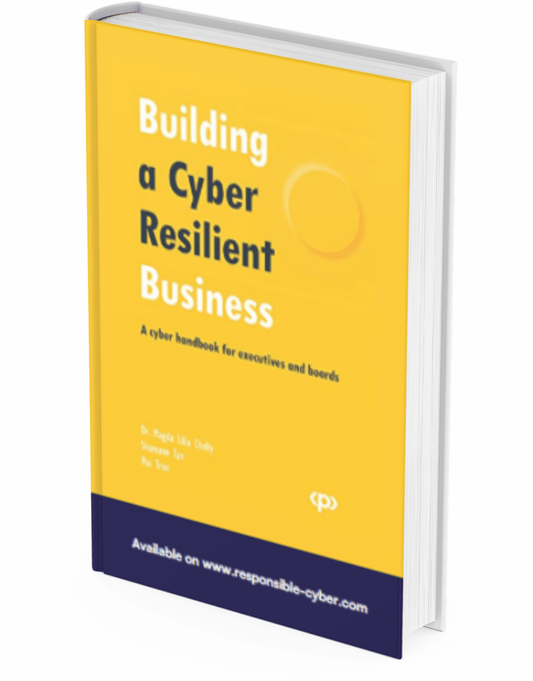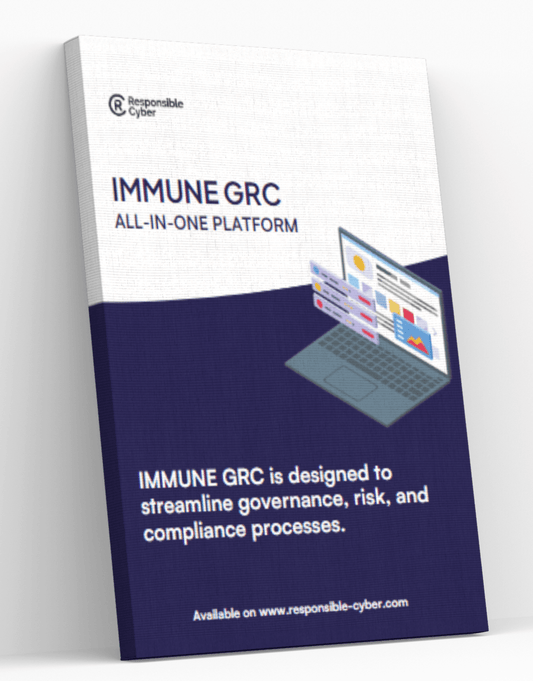Managing Third-Party Cyber Risk: Strategies for Protecting Your Supply Chain

In an increasingly interconnected business environment, third-party vendors and suppliers are integral to the operations of most organizations. While these relationships offer numerous benefits, they also introduce significant cyber risks. Cybercriminals often target third parties as a means to infiltrate larger organizations, making it essential to manage third-party cyber risks effectively. This article discusses the challenges and strategies for managing cyber risks associated with third-party vendors and suppliers, highlighting best practices for assessing and mitigating these risks to ensure the security of your supply chain.
The Growing Threat of Third-Party Cyber Risk
As businesses extend their operations through third-party partnerships, their attack surface expands, creating more opportunities for cybercriminals. A single vulnerability in a vendor’s system can compromise the entire supply chain, leading to data breaches, financial loss, and reputational damage. Recent high-profile incidents, such as the SolarWinds attack, underscore the critical need for robust third-party risk management.
Challenges in Managing Third-Party Cyber Risk
- Lack of Visibility: Organizations often have limited visibility into the security practices of their third-party vendors. This makes it challenging to assess and monitor the risk effectively.
- Complex Supply Chains: Modern supply chains are complex and involve multiple tiers of suppliers. Each tier can introduce new risks, making it difficult to manage the entire ecosystem.
- Regulatory Compliance: Different industries have varying regulatory requirements for data protection and cybersecurity. Ensuring that third-party vendors comply with these regulations adds another layer of complexity.
- Resource Constraints: Many organizations, particularly small and medium-sized enterprises (SMEs), lack the resources to conduct thorough assessments and continuous monitoring of all their vendors.
Strategies for Managing Third-Party Cyber Risk
Effective management of third-party cyber risk requires a comprehensive strategy that includes assessing, monitoring, and mitigating risks. Here are some key strategies:
1. Conduct Comprehensive Risk Assessments
Before engaging with a third-party vendor, conduct a thorough risk assessment to evaluate their cybersecurity posture. This assessment should include:
- Security Policies and Procedures: Review the vendor’s cybersecurity policies, procedures, and controls to ensure they meet your organization’s standards.
- Historical Incidents: Investigate any past security incidents involving the vendor to understand their potential impact on your organization.
- Compliance: Verify that the vendor complies with relevant regulatory requirements and industry standards.
2. Establish Clear Security Requirements
Clearly define and communicate your security requirements to third-party vendors. This can be achieved through:
- Contracts and SLAs: Incorporate cybersecurity requirements into contracts and Service Level Agreements (SLAs). This can include specific security measures, incident response protocols, and compliance obligations.
- Security Questionnaires: Develop and use detailed security questionnaires to gather information about the vendor’s security practices and controls.
3. Implement Continuous Monitoring
Ongoing monitoring of third-party vendors is crucial for identifying and addressing emerging risks. Effective monitoring strategies include:
- Regular Audits: Conduct regular security audits and assessments of your vendors to ensure compliance with your security standards.
- Real-Time Monitoring: Utilize tools and technologies that provide real-time monitoring of third-party activities and alert you to potential security issues.
- Threat Intelligence: Leverage threat intelligence services to stay informed about the latest threats and vulnerabilities affecting your vendors.
4. Foster Strong Relationships
Building strong, collaborative relationships with third-party vendors can enhance your ability to manage cyber risks. This involves:
- Open Communication: Establish open lines of communication with your vendors to discuss security concerns, share threat intelligence, and coordinate incident response efforts.
- Training and Awareness: Provide training and resources to help your vendors improve their cybersecurity practices and understand their role in protecting your supply chain.
5. Develop a Robust Incident Response Plan
Despite best efforts, cyber incidents can still occur. A robust incident response plan is essential for minimizing the impact of a breach involving a third party. Key components of an effective plan include:
- Defined Roles and Responsibilities: Clearly outline the roles and responsibilities of internal teams and third-party vendors in the event of an incident.
- Incident Response Procedures: Develop detailed procedures for detecting, reporting, and responding to security incidents.
- Communication Protocols: Establish communication protocols for notifying stakeholders, including customers, regulators, and business partners.
6. Utilize Advanced Technologies
Advanced technologies can significantly enhance your ability to manage third-party cyber risks. Consider implementing the following:
- Security Information and Event Management (SIEM): SIEM systems provide real-time analysis of security alerts generated by applications and network hardware, helping to detect and respond to threats.
- Vendor Risk Management (VRM) Solutions: VRM platforms automate the assessment, monitoring, and mitigation of vendor risks, providing a centralized view of your third-party risk landscape.
- Blockchain Technology: Blockchain can enhance supply chain security by providing a tamper-proof record of transactions and ensuring data integrity.
Best Practices for Mitigating Third-Party Cyber Risk
Adopting best practices can further strengthen your third-party risk management efforts. Here are some key recommendations:
Prioritize Critical Vendors
Identify and prioritize vendors that have the most significant impact on your operations and data security. Focus your risk management efforts on these critical vendors to ensure they adhere to the highest security standards.
Implement Least Privilege Access
Ensure that third-party vendors only have access to the systems and data necessary for their functions. Implementing the principle of least privilege reduces the risk of unauthorized access and limits the potential impact of a breach.
Regularly Review and Update Contracts
As the cyber threat landscape evolves, regularly review and update your contracts with third-party vendors to ensure they remain relevant and enforceable. This includes updating security requirements, compliance obligations, and incident response protocols.
Encourage Vendor Accountability
Hold vendors accountable for their cybersecurity practices by including performance metrics and penalties for non-compliance in your contracts. This can incentivize vendors to maintain high-security standards and quickly address any deficiencies.
Engage in Information Sharing
Participate in information-sharing initiatives, such as industry groups and cybersecurity alliances, to stay informed about emerging threats and best practices. Sharing information with peers and third-party vendors can enhance collective security and resilience.
Case Study: Effective Third-Party Risk Management
One notable example of effective third-party risk management is the approach taken by a global financial services company. Recognizing the critical importance of their supply chain, the company implemented a comprehensive third-party risk management program that included:
- Rigorous Vendor Assessments: The company conducted in-depth assessments of all third-party vendors, focusing on their security controls, incident response capabilities, and compliance with regulatory requirements.
- Continuous Monitoring: Utilizing advanced VRM solutions, the company monitored vendor activities in real-time, allowing for immediate detection and response to potential security issues.
- Collaborative Relationships: By fostering strong relationships with vendors, the company facilitated open communication and joint efforts to enhance cybersecurity practices.
- Robust Incident Response: The company developed a detailed incident response plan that included predefined roles, communication protocols, and recovery procedures. Regular drills ensured that all stakeholders were prepared to act swiftly in the event of an incident.
This proactive approach enabled the company to maintain a secure supply chain, minimize the risk of third-party cyber incidents, and ensure compliance with regulatory standards.
Conclusion
Managing third-party cyber risk is a complex but essential aspect of modern business operations. As organizations continue to rely on third-party vendors and suppliers, the need for robust risk management strategies becomes increasingly critical. By conducting comprehensive risk assessments, establishing clear security requirements, implementing continuous monitoring, fostering strong relationships, and developing robust incident response plans, businesses can effectively mitigate third-party cyber risks.
Adopting best practices and leveraging advanced technologies can further enhance your ability to protect your supply chain. In an era where cyber threats are ever-evolving, a proactive and comprehensive approach to third-party risk management is essential for safeguarding your organization and ensuring long-term success.
Check other related articles:
- Cyber Security & Third-Party Risk Management: A Step-by-Step Guide
- Addressing Universal Business Challenges: Cybersecurity, Supply Chain, and Regulatory Compliance
- Lessons Learned from the Worst Third-Party Cybersecurity Incidents of 2023
- The Growing Threat of Cyberattacks in Higher Education
- What is Cyber Readiness?
- Unpacking the Cisco Cybersecurity Readiness Report: Implications for Third-Party Risk Management and Supply Chain Resilience
- The Importance of Cyber Insurance for Healthcare Organizations
- 7 Hidden Supplier Challenges That Could Make or Break Your Business: Unveiling the Truth Behind Supply Chain Performance







